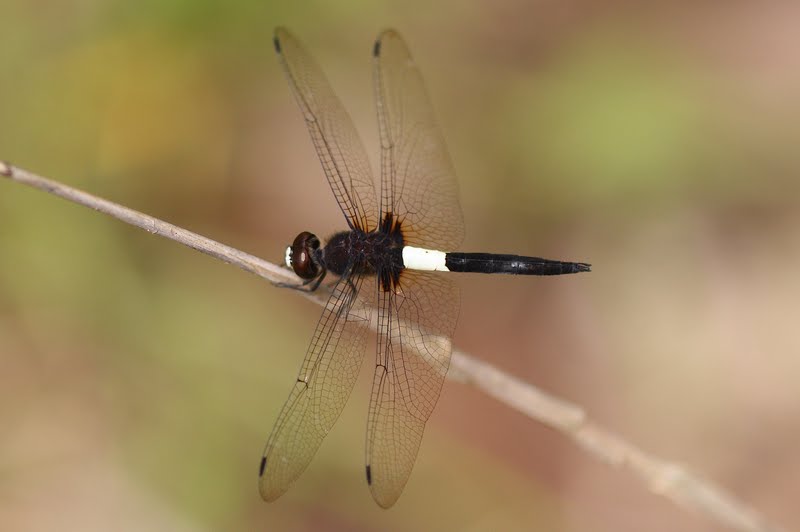update: A week later on August 7th I revisited the same pond and it's drangonfly stick and photographed what appears to be the same species, but this time it was perched at a different angle and I was able to photograph the "white forehead" more clearly. The first one is overexposed, so I set the exposure on my cellphone camera lower and took the second image. It's remarkable just how bright white these markings are in bright daylight!


@Alex's answer found a very close match with Pseudothemis jorina but as pointed out there that species is generally found in Southeast Asia, not Taiwan or Mainland China.
Pasting Pseudothemis jorina in the species search box in https://www.inaturalist.org/observations (found in this answer to Identify this large, beige or pine cone-colored squareish beetle and/or the pine cone it's on?) it is recognized and the alternative name "Banded skimmer" is also displayed. I show a screen shot of the map of reported sightings below, and it confirms that the range is SE Asia from northern Laos to Singapore. This is not likely the right species, but it seems close.
I remembered another site for Taiwanese insects that was cited in this answer to Identify this insect with a big “face” pattern on its brown fuzzy wings. The site is in Chinese and I can't read it, but I could use google to search the main page http://gaga.biodiv.tw/ for Pseudothemis and we may have a winner!
黃紉蜻蜓 (Huáng rèn dragonfly) Pseudothemis zonata (Burmeister, 1839 )!
inaturalist.org calls this a "Pied Skimmer" and shows sightings from Myanmar in the west to Davao in the southern Philippines up to to South Korea and southern Japan, and even a reported sighting in northern California!
Like Pseudothemis jorina, this species is also reported to have a "white forehead" (per Google translate). I can almost see it in one of the images in the question, I'll be walking past that pond again today so I'll see if one is there and if it has this feature.
I notices in the second image below that there is also a slight bluish hue to the white band on the lower dragonfly. This could also be a photographic artifact and not real, but it's worth noting at least.















